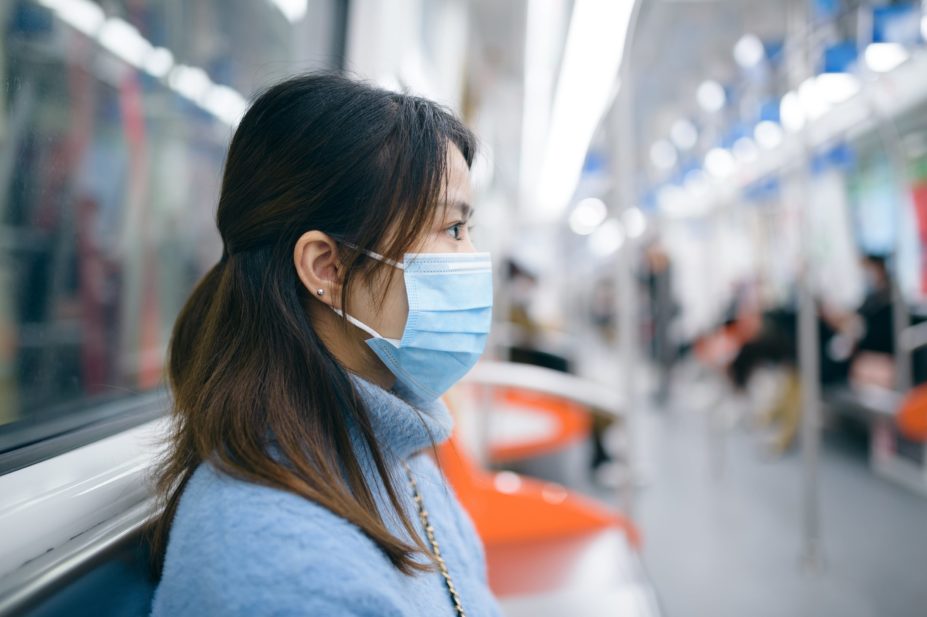
Shutterstock.com
By 11 June 2020, the COVID-19 pandemic had claimed more than 40,000 lives in the UK that we know of; the actual total may be considerably higher[1]
.
Worryingly, a high proportion of those who lost their lives were from black, Asian and minority ethnic (BAME) groups: the Office for National Statistics (ONS) highlights a higher risk of COVID-19-related deaths among some ethnic groups compared with the local white population[2]
.
Black adults were most at risk, being more than four times more likely to die from COVID-19 than other ethnic groups, followed closely by Bangladeshi, Pakistani, Indian, and other mixed ethnic groups.
Even after taking into account factors including age, geography, socio-demographic characteristics (such as deprivation), health and disability, according to the ONS data, the risk of death related to COVID-19 in the BAME group was still significantly higher.
And BAME NHS healthcare and social care workers appear disproportionately affected by COVID-19, compared with the white population, although the reasons why remain unclear.
Investigating why black, Asian and minority ethnic groups are hit hardest
Ethnicity is a highly complex and heterogeneous entity composed of genetic make-up, social constructs, cultural identity and behavioural patterns. Moreover, ethnic classification systems used to explore differences can often be variable in nature and are not without limitations[3]
.
Individuals from different ethnic backgrounds vary in behaviours, comorbidities, immune profiles and risk of infection, as exemplified by the increased morbidity and mortality in BAME communities in previous pandemics[4]
.
Specific ethnic groups have higher rates of some co-existing diseases, which have been associated with severe disease and mortality in COVID-19. For instance, South Asians may be more likely to develop coronary heart disease than white Europeans; Africans and African Caribbeans may be at higher risk of developing high hypertension and stroke; and Africans, African-Caribbeans and South Asians more commonly have type 2 diabetes mellitus compared with the rest of the population[5]
,[6]
.
These are not new revelations
We have known about the continuing and widening inequalities in health associated with deprivation, and subsequently ethnicity, for decades. These ideas and issues have moved through numerous government offices over the years, but these unwanted variations have never been wholly and successfully addressed[7]
,[8]
.
As far back as 1971, British doctor Julian Tudor Hart coined the ‘inverse care law’ — the idea that the “availability of good medical care tends to vary inversely with the need for it in the population served”[9]
. Later, in 1980, the Black Report, commissioned by the then Department of Health and Social Security, laid bare how poor health and death are unequally distributed across groups of the population[10]
.
Indeed, in 2002, I published an analysis of a year’s prescribing data in one northern health authority, of 57 out of a total of 97 GP practices, which showed patients of South Asian origin were 49% significantly less likely to be prescribed lipid-lowering drugs for the prevention of heart disease compared with the local white population. This was despite their higher prevalence of coronary heart disease[11]
.
Many of the health inequalities identified in these reports still persist today, and we have witnessed them so vividly through the COVID-19 pandemic.
Doing the research
The COVID-19 inequality has garnered much media attention and people from various corners of society, including representatives for healthcare professionals, are demanding reliable and robust investigations into why BAME people have had worse COVID-19 outcomes. Public Health England’s recent report on disparities in risk and outcomes is a welcome restatement of the data in this area[12]
.
However, two major barriers need to be addressed in order to establish our response to these data.
Firstly, robust research is needed to determine the interplay between the virus and genetic, cultural, behavioural and societal differences in different BAME groups, and why they are disproportionately affected. The National Institute for Health Research has called for research proposals in this area, but it is paramount that these studies also look at the priorities of BAME communities and their different needs.
Those from BAME communities can be less forthcoming in participating in health research studies and are often under-represented[13]
. As a result, any subsequent treatment recommendations may have to be treated with a degree of caution in those communities[14]
,[15]
.
In this urgent effort to gather as much evidence as possible on COVID-19, it is vital that all BAME groups are engaged in this research through studies, trials and surveys, so that any subsequent interventions can be tailored to the needs of the different communities, and sometimes within those communities.
If we manage to change this culture of behaviour and attitude, then perhaps in the longer term a greater number of people from BAME backgrounds will volunteer more freely to take part in health research, and therefore help healthcare professionals be more effective in delivering better health outcomes.
This is the opportunity of a lifetime to seriously reduce variations in health and health inequalities, and discover new methods of ensuring that interventions are more personalised and effective in different ethnic groups.
Engaging locally
Secondly, much greater attention must be paid to the way public health messaging is perceived and even acted on by different BAME communities. Could more targeted government messaging that was more appropriate to the needs of different BAME communities have made a difference? I certainly think so, although this is not just about providing guidance in different languages; but also exploring and investing in other means of effective engagement and communication.
Breaking down barriers in communities requires local leadership from those who understand and are embedded in their communities. Local champions can play a role in breaking down the invisible barriers of tradition, religion and culture, and engage with BAME communities with purpose and meaning.
For example, through my own work and as a UK-born pharmacist of Hindu faith, I have proactively engaged in outreach work, covering a large part of Yorkshire during the COVID-19 pandemic. Gathering the support of religious and community leaders from eight mosques, I was able to twice reach out to more than 40,000 Muslims via a Q&A session on Zoom, partly relayed in Gujarati. I have also been able to regularly convey messages and information around COVID-19 through various television and radio stations, including a faith TV channel aimed at a largely Sikh audience with over 60,000 viewers, and regional ITV news programmes. Some of the deliveries have been in languages other than in English, including Hindi and, at times, broken Urdu.
This engagement at a local level requires individuals and organisations as a whole to step up, and the government, council leaders and local authorities to think differently about how their messaging reaches those in BAME communities.
We also need to work on pharmacy’s role in this. There must be better use of pharmacists in this endeavour, especially as 45% of those registered in the UK are of BAME origin. In the first of many steps towards addressing these health inequalities, let’s make this the new culture of wider practice — never adopted previously — now and beyond COVID-19.
As a society, we are discovering new things about ourselves as a result of COVID-19. This, of course, includes finding new ways of working. But importantly, it has starkly illustrated the long-standing structural problems that risk the health of our BAME communities.
Now is the time to break down the barriers to eliminating inequality, with absolute conviction. Pharmacy can play a vital and important role in this, but not without wider collaboration, stronger partnerships and robust leadership.
Mahendra Patel is honorary visiting professor at the University of Bradford, UK
References
[1] NHS England. 2020. Available at: https://www.england.nhs.uk/statistics/statistical-work-areas/covid-19-daily-deaths (accessed June 2020)
[2] Office for National Statistics. 2020. Available at: https://www.ons.gov.uk/peoplepopulationandcommunity/birthsdeathsandmarriages/deaths/articles/coronavirusrelateddeathsbyethnicgroupenglandandwales/2march2020to10april2020 (accessed June 2020)
[3] Lee C. Soc Sci Med 2008;68:1183–1190. doi: 10.1016/j.socscimed.2008.12.036
[4] Zhao H, Harris RJ, Ellis J et al. Epidemiol Infect 2015;143:3375–3383. doi: 10.1017/S0950268815000576
[5] British Heart Foundation. 2020. Available at: https://www.bhf.org.uk/informationsupport/heart-matters-magazine/news/behind-the-headlines/coronavirus/coronavirus-and-bame-patients (accessed June 2020)
[6] Docherty AB, Harrison EM, Green CA et al. BMJ 2020;369:m1985. doi: 10.1136/bmj.m1985
[7] Institute of Health Equity. 2020. Available at: http://www.instituteofhealthequity.org/resources-reports/marmot-review-10-years-on (accessed June 2020)
[8] Public Health England. 2018. Available at: https://www.gov.uk/government/publications/health-profile-for-england-2018 (accessed June 2020)
[9] Hart JT. Lancet 1971;297(7696):405–412. doi: 10.1016/S0140-6736(71)92410-X
[10] Townsend P, Davidson N, Black D et al.Inequalities in health: The Black report. London: Penguin; 1988
[11] Patel MG, Wright DJ, Gill PS et al. BMJ 2002;325:25. doi: 10.1136/bmj.325.7354.25
[12] Public Health England. June 2020. Available at: https://assets.publishing.service.gov.uk/government/uploads/system/uploads/attachment_data/file/890258/disparities_review.pdf
[13] Khunti K, Bellary S, Karamat MA et al. Diab Med 2017;34(1):64–8. doi: 10.1111/dme.13103
[14] Jang M, Vorderstrasse A. JMIR Res Protoc 2019;8(4):e11865. doi: 10.2196/11865
[15] Hussain-Gambles M, Atkin K & Leese B. Health Policy 2006;77(2):149–165. doi: 10.1016/j.healthpol.2005.07.022


